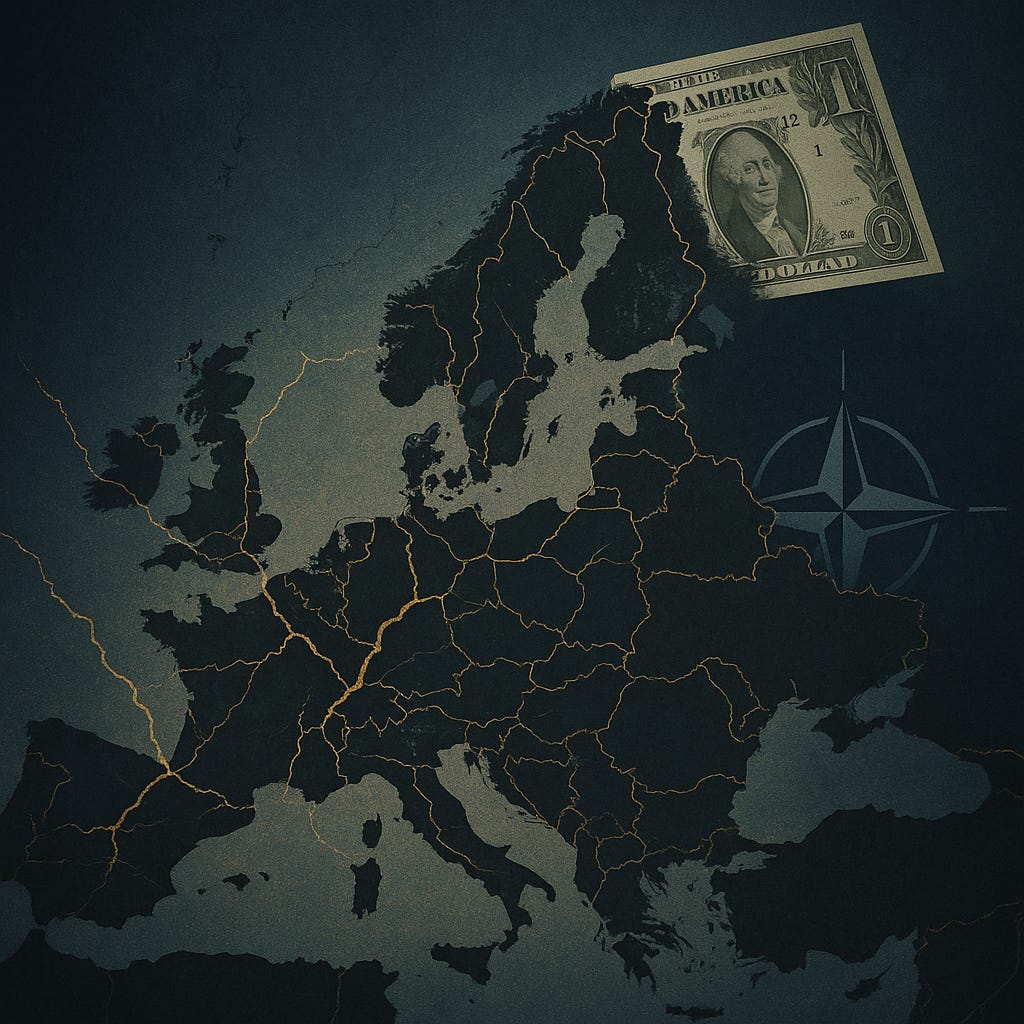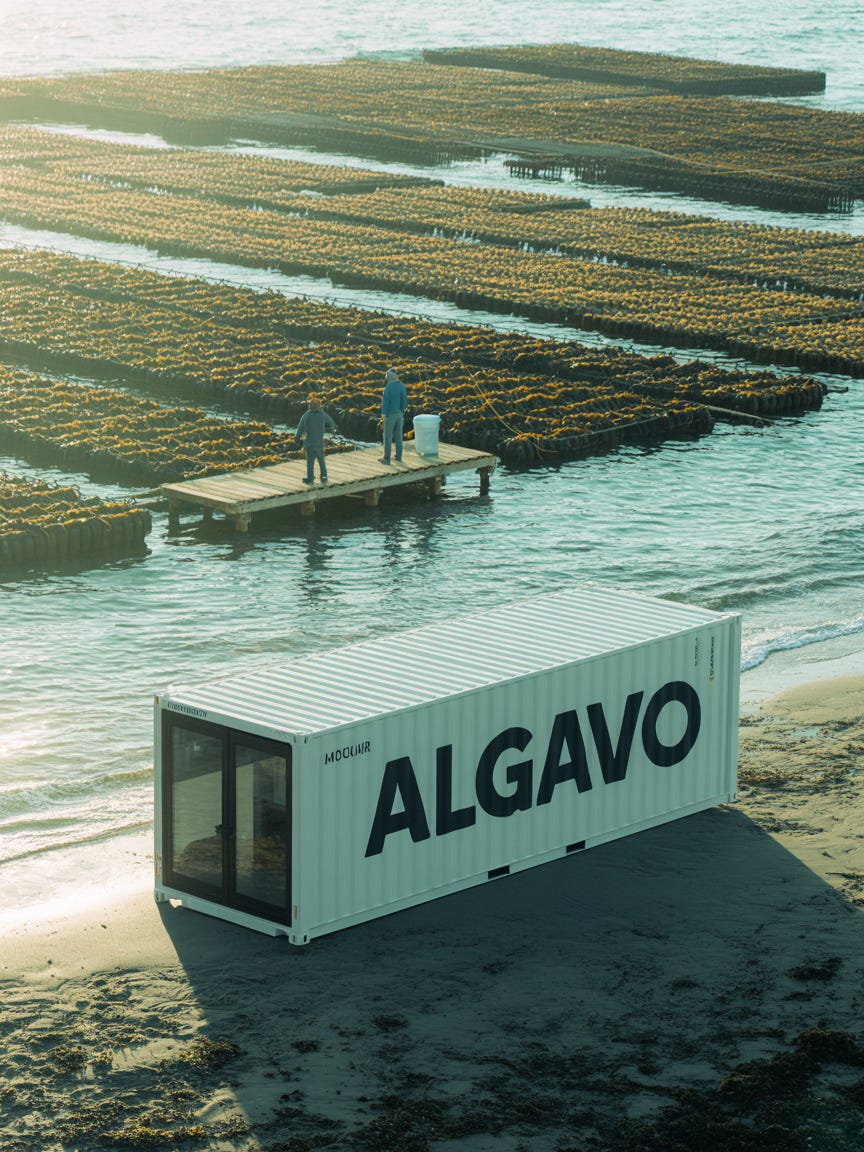The Enemy Europe Needs
The euro can’t compete, the pensions are gone, and NATO’s only lifeline is war.
Sometimes the picture only becomes clear when you lay out the numbers. Seventy percent of all paper U.S. dollars circulate outside America. At the same time, the U.S. absorbs 45% of global consumption. That is what makes the U.S. the world’s financial center. Not ideology, not trust alone — but the hard fact that companies like BMW and Toyota price their cars in dollars. That’s where the demand is. That’s where the money flows.
And so the dollar is anchored in the world.
The real problem lies elsewhere
The weak spots are not in Washington — they’re in Europe and Japan.
Europe has been gutted by a series of self-inflicted blows: COVID policies that shut down entire sectors, a migration crisis that erodes cohesion, fake climate policies that strangle industry, and sanctions against Russia that hurt Europe more than Russia. The result is visible in the streets: small and medium-sized businesses — the backbone of prosperity — have been wiped out.
Japan has its own demographic and economic swamp, but the pattern is the same: stagnation and dependency.
Europe cannot be trusted
Anyone who still believes the euro is a true alternative to the dollar is fooling themselves. Europe lacks both scale and credible institutions. In fact:
Transactions above €3,000 already require state oversight or approval.
The EU openly claims the right to seize private assets “to finance the war.”
And because Europe is not a demand center, the euro can never compete with the dollar.
That makes the euro not a safe haven, but a political instrument. And political trust is always temporary.
The logic of the enemy
Here’s the core: if there is no war, the lie is exposed. People will see their pensions and savings have evaporated. They will realize the EU is only a fraction of the global economy, with no leverage to challenge the dollar.
That is why an enemy is required. Politicians cannot step out, because the military machine must keep running. NATO should have been dismantled long ago, but it wasn’t — because hundreds of thousands of careers, contracts, and pensions depend on it.
Without an enemy there is no NATO. Without an enemy the money flow stops.
Migration: two worlds
Migration makes the picture even more volatile. In the U.S. — despite all its problems — integration is part of the national story. In Europe, parallel societies are built and preserved. Cultures don’t merge; they clash.
Look at Sweden: in parts of Malmö the police barely enter anymore. That is not an exception, it’s a warning.
Irreversible
Put the pieces together and the direction is obvious:
The euro will never replace the dollar.
The EU will either centralize into an authoritarian block or break apart.
The enemy narrative is not an option — it’s a system requirement.
Europe is not at a crossroads. It’s already halfway down the slide.
What matters now
If you see this, you know that savings and paper guarantees are no longer a strategy. Strategy means:
holding hard assets outside the euro,
tying contracts to markets where demand actually exists,
building networks that don’t collapse when Brussels or Frankfurt does,
creating value people need, independent of subsidies and narratives.
Why Algavo matters
In such a world, a project like Algavo gains meaning. Not as another ESG checkbox or subsidy magnet, but as a parallel system that creates physical value. A company that proves real economy can still exist — outside the theater of paper promises.
Closing
The dollar stays dominant because the demand is there.
Europe needs an enemy to keep its illusions alive.
And NATO survives only as long as it can sell a threat.
Those trapped in that loop will lose. Those who build in parallel will endure.





Great piece! Since its inception, the euro has served to diminish national sovereignty and strength. The purported benefit of facilitating cross-border trade and logistics pales in comparison to the reality: after years of manipulation, we are finally recognizing the hollowness of the EU "project". The military apparatus is a key tool in maintaining the illusion of a unified entity, preventing the exposure of its underlying authoritarian nature. This is evident in the difficulties accessing investment or funding, which are increasingly tied to ESG and SDG mandates enforced through European-organized funds. Clearly, power resides not with the people or our votes, but with those who control these systems. Parallel structures are therefore essential. Consider the Amish, maintaining their distinct society. Until the authoritarian regime falters, we must operate from the margins, patiently awaiting the opportune moment to challenge its dominance. So be it.